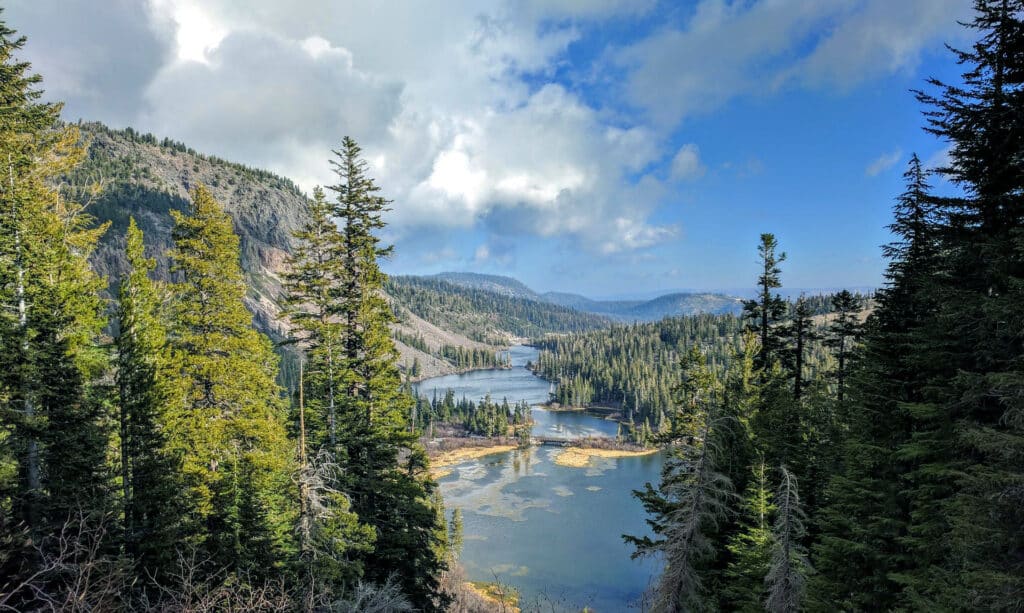Blue Forest Conservation and The Freshwater Trust Partner to Redesign Conservation Funding for Watersheds
June 14, 2022
The Freshwater Trust (TFT) is partnering with Blue Forest Conservation, a nonprofit creating sustainable financial solutions to meet pressing environmental challenges, to explore innovative, large-scale conservation finance opportunities for Western watersheds.
Despite nearly $2 trillion invested in efforts to improve water quality over the last fifty years, and another $2 trillion spent on natural disaster recovery, most U.S. waterways remain impaired. Accelerating drought, flood, and fire risks rapidly compound the problem. Together, TFT and Blue Forest will tackle this daunting challenge by developing integrated, scaled up funding approaches that can rapidly target and implement the highest impact projects across an entire watershed.
“Our mission is to increase the pace and scale by which watersheds can achieve resilience, and to do that, we must think big and change the systems that fund and deliver restoration and conservation efforts,” said Tim Wigington, Vice President of Finance & Policy at TFT. “We’re looking to foster new approaches in environmental projects, policies and financing. Blue Forest Conservation is the perfect partner to work with toward this ambitious goal.”

Blue Forest structures investments in projects that protect water resources, communities, and forest health and mitigate the effects of wildfire and drought. Blue Forest’s flagship product, the Forest Resilience Bond (FRB), directs private capital to public lands. This bond approach uses multiple public and private funder “pledges” to secure upfront capital, which is then used to get work done quickly, compared to piecing together multiple grants and contracts. By combining Blue Forest’s forest work with TFT’s work building large-scale restoration and conservation programs in agricultural and urban areas, the two groups will model a new integrated Watershed Resilience Bond approach (aka Outcome Fund or Outcome Bank) that attempts to drive investment at the full scale needed.
Accelerating restoration prevents further degradation and reduces future costs to stakeholders.
Especially in California, Oregon, Washington and the Western U.S., most water comes from forests and mountain snowpack, and most of that water is used by cities and agriculture. An unhealthy forest puts water resources at risk. More frequent wildfires not only kill trees at an unnatural level, but also scar the soil, which reduces the potential for storing the snowpack that’s critical for resilient watersheds.
“This is an interdisciplinary and integrated problem,” said Nick Wobbrock, Co-Founder of Blue Forest. “It requires a good understanding of the science and infrastructure and policy involved, but also where the funding and financing can come from.”
“We cannot keep chopping up the whole into small pieces and expect that scattershot investments will solve the problem.”
Unlike other sectors of the economy, water is a public good; there is no economy for watershed projects. Financial and practical barriers make it difficult to coordinate projects and generate results at scale. The integrated approach TFT and Blue Forest intend to pursue goes straight at these limitations.
“We want to break down the silos of money that have historically been set aside for conservation,” said Wigington. “A Watershed Resilience Bond can concentrate multiple public and private funding sources into a single watershed. This scale can in turn attract private impact investors, who provide more capital to accelerate the restoration.”
Once the money is ready to go, precision analytics made possible by the computing revolution are now available to assist in applying the combined funds to the most beneficial projects across a watershed.
“We can now realistically compare a forest restoration project against expanding a reservoir, upgrading a leaky water delivery system, or flooding a field to replenish groundwater so that every dollar invested results in the highest impact outcome,” said Wigington.
“A Watershed Resilience Bond will allow us to transition from a few isolated projects a year to the type of holistic actions that will secure the resilience of forests and freshwater ecosystems,” said Wobbrock.
About The Freshwater Trust
The Freshwater Trust has nearly 40 years of technology-driven, watershed-scale restoration and conservation expertise. Our policy and program work spans Oregon, Idaho, California, Washington, and Colorado. Beyond a broad array of project implementation roles, TFT has developed the analytics to identify the infrastructure, land management practices, and investments needed in targeted locations to meet outcome objectives. TFT designs watershed-scale restoration and conservation programs optimized based on these analytics, and enables landowners and regulated entities to build, measure, and track program outcomes.
About Blue Forest Conservation:
Blue Forest Conservation is a nonprofit organization committed to creating sustainable financial solutions to pressing environmental challenges. Blue Forest’s principal financial product, the Forest Resilience Bond (FRB), deploys private capital to finance forest restoration projects on public lands that reduce the risk of catastrophic wildfire. Blue Forest developed the FRB in partnership with the World Resources Institute, and works closely with the USDA Forest Service and a host of NGO and academic partners that provide research, evaluation, and implementation expertise.
###
Image by ioliyarnik from Pixabay
#conservation finance #Forest Resilience Bond #watersheds
